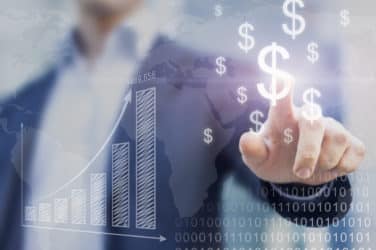
It has been 10 years since J.P. Morgan launched its annual e-Trading Edit, a comprehensive survey of trends and topics in the industry. The survey is distinguished by its breadth and robust market participation, as more than 4,200 institutional traders responded in the 2025 survey, which was released at the beginning of the year.
Scott Wacker, global head of FICC e-Sales and Kate Finlayson, global head of FICC market structure & liquidity strategy at J.P. Morgan, took the opportunity of the 10-year anniversary to discuss the “remarkable’ changes observed in electronic trading. Wacker noted that every survey predicted clients would use more electronic trading, which has been borne out, and more changes are likely over the coming years with the emergence of artificial intelligence and machine learning.
Wacker noted electronic trading was less prevalent in 2015, especially outside equities. In addition to technological advances, spikes in volatility and the need to access liquidity remotely during the Covid pandemic provided tailwinds over the past decade.
“We have seen this evolution build so much momentum,” said Wacker. “A significant portion of our business is now electronic, and it continues to grow.”
‘Domino Effect’
Wacker described a domino effect of electronic trading moving from equities, to FX and into broader FICC markets.
“Commodities had a huge influence on how we trade rates, and now into the credit world,” Wacker added. “We are even talking about mortgage-backed securities, ETFs and fixed income so there’s a lot coming down the pipe,” in electronic trading.
Finlayson noted that while it may feel that trading techniques, behavior and technology change gradually, the overall change since 2015 has been remarkable.
Some over-the-counter instruments such as interest rate swaps have moved on to trading venues due to regulations like Dodd-Frank and MiFID II/MiFIR, and certain trade reporting requirements have led to adjusted operational workflows to facilitate and streamline processes. Other regulations such as EMIR and uncleared margin requirements have also worked to shape the way trades are executed, the channels explored and how these trades are managed electronically.
“Best execution requirements under some of those regulatory frameworks required a step-up in terms of execution obligations,” said Finlayson. “That resulted in different techniques with respect to liquidity provider selection and the evolution of trading technology.”
More data
Regulators’ push toward electronic trading provided market participants with more data and transparency, while improved functionality in execution management systems enabled clients to more easily access liquidity.
“The survey shows that as new technologies adapted to changes in market structure and regulation, the benefits to market participants led them, to embrace even more technology in terms of leveraging data and analytics to better understand what was happening in the market,” Finlayson said.
Electronic trading provides trade-by-trade data, including for the smaller child orders in algorithms. Such granular data helps optimize algorithmic order execution strategies and post-trade analytics, and it’s also a primary input for artificial intelligence and machine learning applications.
Finlayson highlighted increased data enabling more algorithmic execution in FX, especially in highly volatile markets. During such risk events there has been a notable uptick in the use of FX algos and basket trading.
“The increased use of these techniques reflects the growing level of comfort with algorithmic execution, and how workflow efficiencies that enable market participants to trade at scale can be just as important as execution and pricing competitiveness, especially in volatile markets,” said Finlayson.
Wacker noted for J.P. Morgan’s first algo in the US Treasury market, adoption was slow at first but the offering has gained momentum. Electronic trading historically has been seen as a top of book, small notional, large volume business, but more large transactions are taking place with little to no information leakage.
Finlayson highlighted how trading techniques and tools can work together. For example, portfolio trading, algos and ETF primary and secondary trading have been combined to enhance liquidity, and she expects more innovation there. There are also tools that provide clients with insights on the best time periods for liquidity.
Wacker added that cross-asset portfolio trading enables clients to put positions on quickly with market moves, and also trade in and out of synthetic portfolios. He said: “That technology is not fully developed, but you can kind of see where it’s going and it is very exciting.”
Growth Areas
Electronic trading has reduced friction, compressed margins, and narrowed bid-ask spreads. That more attractive marketplace has lured new entrants including systematic accounts and non-bank market makers, adding more liquidity.
Market participants have been searching for yield in emerging markets for some time but it can be a challenge to access onshore liquidity. As a result, Finlayson said local policymakers have been looking to encourage foreign investor access and participation, which could work to facilitate electronic trading. She said: “Emerging and frontier markets continue to be a focus.”
J.P. Morgan’s recent surveys have also shown increased interest in crypto assets and digital finance. Finlayson added: “It’s not front and center for a lot of the institutional traders, but that could shift as institutional adoption increases when regulatory frameworks are in place.”
Wacker compared the possible evolution in digital assets to electronification in corporate bond trading. Five years ago, most people did not think electronic trading would work in the corporate bond market, but growth has doubled in the last year and more vendors are providing new ways of trading credit electronically, which reduces cost and information leakage.
He said: “I think digital ledger technology will have its day. It’s just a question of when.”






